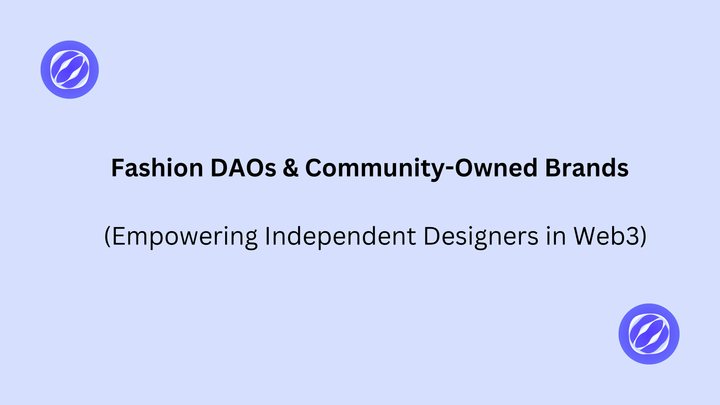Caldera Rollups: Scalable Hybrid Rollups in a Modular Blockchain Ecosystem

Scalability and customizability are two pillars for the next generation of blockchains. Caldera is at the forefront of this movement with its rollup-as-a-service platform, allowing anyone to deploy their own high-performance Layer-2 chains. In this article, we explain how Caldera’s rollups work, what a hybrid rollup model means, and how these innovations boost scalability and security while fitting into a modular blockchain ecosystem.
What is Caldera and Rollups-as-a-Service?
Caldera is a modular blockchain platform that enables developers to easily create custom Layer-2 (L2) rollups with Ethereum-level security. In simple terms, a rollup is a blockchain that offloads most of its processing off the main network (Layer-1) to achieve higher speed and lower cost, while still relying on Layer-1 for security. Rollups bundle or “roll up” many transactions and post them to the main chain (like Ethereum) in a compressed form. By doing computation off-chain and using Layer-1 mainly as a settlement and data layer, rollups massively increase throughput without sacrificing security.
Caldera provides “Rollups-as-a-Service” (RaaS). Think of it as an all-in-one toolkit where projects can launch their own tailor-made rollup chain in minutes, via a dashboard, without needing a large engineering team. Under the hood, Caldera supports leading rollup frameworks:
- Optimism OP Stack – The open-source Optimism design for optimistic rollups.
- Arbitrum Orbit (Nitro) – Arbitrum’s technology, also an optimistic rollup.
- Polygon CDK (Chain Development Kit) – which can create a zkEVM chain (zero-knowledge rollup).
- zkSync Stack (for zk-rollups, as evidenced by partnerships like XPLA’s zkXPLA).
A developer using Caldera can choose their preferred stack (OP, Arbitrum, Polygon, etc.) when launching a chain. Caldera’s platform takes care of all the infrastructure – provisioning nodes, RPC endpoints, block explorers, and so on. This drastically lowers the technical barrier. Essentially, Caldera is turning the process of launching a new blockchain into a plug-and-play experienc
Why use a custom rollup? For many projects (games, DeFi protocols, web3 communities), having their own chain means:
- High Performance: The chain is solely for their app(s), so no congestion from others. Caldera chains are described as “lightning fast, high-performance” Ethereum rollups. This means high throughput (transactions per second) and low latency, suitable for real-time applications like games.
- Custom Rules: Developers can customize parameters – e.g. gas token, block times, even remove gas fees for users in some cases. Caldera allows setting a native token as gas or eliminating gas fees for a smoother user experience.
- Cost Savings: By not sharing the chain with unrelated dApps, transaction costs remain predictably low. Plus, Caldera uses cloud infrastructure and optimized nodes to ensure 99%+ uptime and DDoS protection via Cloudflare.
- Security via Ethereum: Crucially, these rollups inherit security from Ethereum (or another base chain) – meaning they post data or proofs to Ethereum, leveraging its decentralization and security. This addresses the main concern of standalone chains (appchains) which might be fast but not very secure. With rollups, you get the best of both worlds.
In summary, Caldera makes launching an app-specific blockchain as easy as deploying a smart contract, but with far greater control and scalability. This service comes at a time when many see a future of many specialized chains (an “Internet of Chains”) rather than all dApps piling onto one monolithic chain.
How Caldera Rollups Work
Caldera’s rollups work as optimistic rollups by default, meaning they assume transactions are valid and only revert if a fraud proof is submitted within a challenge window. This approach, used by Optimism and Arbitrum, allows immediate confirmation and high throughput. Caldera supports:
- OP Stack rollups: Essentially creating a new Optimism-style L2. Caldera actually collaborated to launch testnets like Taro, the first OP Stack rollup using Celestia for data availability.
- Arbitrum Orbit chains: Leveraging Arbitrum’s technology for custom chains.
- Polygon CDK chains: Potentially enabling zkEVM-based rollups which use validity proofs.
When you create a “Caldera Chain”, under the hood:
- It sets up a sequencer (the node that orders transactions on the rollup). Caldera, by default, might run the sequencer for you or let you run it.
- It configures smart contracts on the Layer-1 (Ethereum or another) that the rollup will use. Typically, an optimistic rollup has an inbox contract on L1 where transactions are posted, and perhaps fraud proof contracts.
- It provides infrastructure like block explorer, indexer, bridge UI, etc., to interact with the rollup.
- Each chain can have its own bridges to L1 or other chains. Caldera integrates bridging solutions (for example, it partnered with Hyperlane to enable interoperability between Caldera rollups and external chains).
- If using Celestia or another data layer, Caldera sets up the connection such that the rollup’s data is published to that external Data Availability (DA) layer instead of Ethereum. This is part of Caldera’s modularity, which we’ll detail in the next section.
Caldera rollups can settle to different networks. By default, many will settle on Ethereum mainnet for maximum security. However, Caldera allows chains to settle on any EVM-compatible base: Ethereum, BNB Chain, Polygon, Avalanche, etc. This flexibility means a project could choose a cheaper base like Polygon if they want lower costs and are comfortable with its validators for security, or the full security of Ethereum if that’s paramount.
Security in Caldera’s model comes from multiple layers:
- Ethereum Security: Caldera chains typically use Ethereum’s security via fraud proofs. In fact, they employ fault proofs (fraud proofs) to increase security for every transaction. If someone tries to cheat on the rollup, a fraud proof can be submitted to challenge it on Ethereum, forcing a correction and slashing the malicious sequencer.
- Validator Sets and Sequencers: Some configurations allow having multiple sequencers or a sequencer election system. There’s mention that standard OP Stack has one sequencer, but solutions exist (Conduit’s Elector, etc.) to manage sequencer failover. Caldera likely follows best practices here to ensure high uptime and decentralization over time.
- Multisigs for Control: Caldera uses multisignature ownership for mainnet contracts as an additional security measure. That means no single party can, for example, upgrade the rollup contracts or withdraw funds without multiple approvals. Also, their production infrastructure is locked under two-person integrity controls to prevent internal exploits.
- Audits and Partners: Many Caldera chains benefit from audits of the underlying OP/Arbitrum code and any custom bridging. Caldera itself integrates robust tools like Gnosis Safe for asset management on-chain.
The Hybrid Rollup Model (Settlement vs Data Layers)
One of Caldera’s standout features is its modular approach, often referred to as a “hybrid rollup” model in this context. Traditionally, an L2 rollup posts both transaction data and state root updates to a single L1 like Ethereum. Caldera, however, allows separating the Data Availability (DA) layer from the settlement/consensus layer:
- A Caldera rollup can settle on Ethereum (meaning Ethereum is where fraud proofs are resolved and finality is anchored) while using another network for data availability, such as Celestia. This combination is sometimes called a hybrid rollup because it mixes technologies – for example, an Optimistic rollup that uses Celestia’s DA rather than clogging Ethereum with data.
- In June 2023, Celestia Labs released a DA interface for the OP Stack, and Caldera launched the Taro testnet leveraging this: the OP Stack rollup that “uses Celestia for DA and ‘settles’ on Ethereum”. This is a prime example of the hybrid model: Ethereum provides security and settlement of disputes; Celestia provides scalable data availability for the rollup’s transactions.
What’s the advantage of this? By writing transaction data (the bulk of info needed to reconstruct chain state) to Celestia, the rollup frees up space on Ethereum, making it cheaper to operate. Celestia is a specialized network just for ordering and making data available (without executing it), which is highly scalable. Meanwhile, any fraud challenge would still go to Ethereum to be resolved, meaning Ethereum’s security is there if someone tries to cheat. This offers scalability without sacrificing trust – you trust Ethereum’s security and Celestia’s data availability, each doing what they do best. It’s a very modular blockchain approach: use the optimal layer for each function.
Caldera takes this modularity further: it allows developers to choose a data availability partner for their rollup. Options could include:
- Ethereum (posting full data to Ethereum as classic rollups do),
- third-party DA chains like Celestia,
- or even potentially EigenLayer’s EigenDA or others in future (some projects like Mantle or Celo have explored EigenDA).
The idea is that the “data layer” is pluggable. This is possible because the OP Stack was built with a DA layer interface in mind.
Thus, a Caldera rollup can be seen as a 3-layer system:
- Execution Layer: the Caldera chain itself where transactions execute quickly.
- Data Layer: maybe Celestia (for posting transaction data blobs).
- Settlement/Consensus Layer: Ethereum (for posting state roots, proofs, and handling disputes).
This hybrid architecture enhances scalability (Celestia can handle loads of data) and can reduce costs (data on Celestia is cheaper per byte than on Ethereum L1). It’s called “hybrid” because it combines elements of optimistic rollups (fraud proofs on Ethereum) with modular blockchains (external DA layer).
It’s worth noting that Caldera supports not only optimistic but also ZK rollups (through Polygon CDK or zkSync’s stack as indicated by their zkXPLA partnership). A hybrid ZK rollup could similarly post proofs to Ethereum but data to Celestia, for example. The flexibility is there.
Benefits for Scalability and Security
Caldera’s model brings several benefits:
- Massive Scalability: By enabling many app-specific rollups, Caldera contributes to a web3 ecosystem where load is distributed. If one game runs on its own rollup, it doesn’t slow down others. And if that rollup posts minimal data to Ethereum (or uses Celestia), it doesn’t congest Ethereum much either. It’s an “Internet of Chains” vision: lots of specialized networks interoperating. In fact, Caldera calls itself “a network of interconnected, purpose-built blockchains”.
- Ethereum-Grade Security: Even though these are new chains, they are not starting from scratch security-wise. They can inherit the battle-tested security of Ethereum’s validator set. For optimistic rollups, that means as long as Ethereum stays secure and one honest participant can submit fraud proofs, the rollup’s funds are secure. Caldera chains also utilize fault proofs to bolster security. This is crucial if projects are going to trust these rollups with significant value. It’s far safer than launching your own proof-of-stake sidechain with a small validator set.
- Customizability without Hard Forks: Projects can tailor their chain (gas token, fee model, whitelisted contracts or not, even regulatory compliance measures) without needing to propose changes to a shared chain. For example, an institution could launch a Caldera rollup that only it and whitelisted partners validate, to comply with regulations, yet still inherit Ethereum security. Or a DeFi project could use its governance token as the gas on its rollup, creating more utility for the token.
- Reduced User Costs: Users of apps on a Caldera rollup enjoy near-zero gas fees if configured, or at least much cheaper fees than L1, since there’s no competition with other apps. Also, if the rollup is well-designed, actions can be abstracted: a user might not need to hold ETH for gas – they could pay fees in the app’s token or perhaps the fees are subsidized.
- Improved UX (User Experience): Fast transaction finality (often sub-second or a few seconds on rollups) means interactive applications like games or social dApps become feasible on blockchain. Caldera emphasizes providing smooth performance and ultra-low fees for games and other use cases. Additionally, Caldera’s infrastructure can integrate with wallets so that, say, when a user uses a dApp, behind the scenes it’s using the rollup without the user needing to switch networks manually.
- Interoperability via Metalayer: Caldera has introduced something called the Metalayer, which is essentially its interoperability layer connecting all the Caldera rollups together and with external chains. The Metalayer provides “intent-based bridging for 100+ rollups, settling in seconds”, enabling shared liquidity and cross-rollup interactions. This means if you have 10 app rollups running on Caldera, Metalayer can allow quick transfers or contract calls between them, preventing the ecosystem from becoming siloed. It also connects to other chains, possibly via Hyperlane or other bridges. So, from a user perspective, even if there are many chains, they feel connected – you can move assets or use them across the “constellation” of Caldera chains seamlessly.
- Security in Numbers: With more adoption, Caldera can implement decentralized sequencer sets (shared sequencers or multiple sequencer nodes per chain) improving censorship resistance and uptime. Also, by having 30+ integrations with industry tools (as Caldera advertises) – including things like Biconomy for meta-transactions, Gnosis Safe for multisig, etc. – each chain comes out-of-the-box with security and usability best practices.
Role in the Modular Blockchain Ecosystem
Caldera’s approach exemplifies the modular blockchain thesis: instead of one chain doing everything (execution, data availability, consensus), these responsibilities are split across layers that specialize. In the broader ecosystem:
- Celestia and Other DA Layers: Caldera is one of the first platforms to leverage Celestia’s data availability solutions in a real testnet (Taro). This tight collaboration shows how execution layers (rollups) can pair with a dedicated DA layer for scalability. It is likely that mainnet Caldera chains in the future could adopt Celestia once it’s fully production-ready, making modular stacks commonplace.
- Emerging L2s and L3s: We are seeing a trend of projects launching L3 rollups (a rollup on top of another rollup) for even more customization – for instance, an Arbitrum Orbit chain or a zkSync “Hyperchain”. Caldera’s infrastructure is well-positioned to facilitate these as well, since it already deals with launching on frameworks like Arbitrum and zkSync’s. In fact, Caldera mentions powering over 100 customizable L2s and L3s, about 25% of all Ethereum rollups, via its Rollup Engine. This indicates Caldera is playing a significant role in proliferating rollups.
- Real-World Asset and DeFi Platforms: Tokenization platforms (like Mantra mentioned in RWA context) might use their own Caldera chain to comply with regulations while remaining interoperable. DeFi protocols like Clearpool launched Ozean, an institutional credit rollup, via Caldera (Clearpool’s Ozean is built as a Caldera chain). This shows Caldera’s role in enabling tailored solutions – Ozean can handle KYC for institutional DeFi on its own chain while still tapping liquidity via Metalayer.
- GameFi and Metaverse: Game projects (such as XPLA for gaming content) are using Caldera to overcome the limitations of their previous infrastructure. XPLA moved from being a Cosmos chain to launching zkXPLA on Caldera (using zkSync tech) to leverage Ethereum’s security and broader liquidity. Many other games and metaverse projects can similarly launch chains with near-zero fees for gamers, without congesting main networks. Caldera emphasizes gaming: “Build Web3 games that scale effortlessly on Caldera... zero-cost NFT minting... low fees on your rollup, all leveraging Ethereum’s security”
- Experimental New Features: Because each chain is separate, developers can innovate quickly. They can implement new Ethereum Improvement Proposals (EIPs) or custom features on their rollup before those are on mainnet. This sandbox nature can drive faster evolution in blockchain tech, with successful features perhaps feeding back to L1s later.
In the modular landscape, Caldera is like the “glue” or toolkit that brings modular pieces together for each project. It abstracts the complexity of coordinating different layers (L1, DA layer, execution environment) and provides a unified interface for developers. This accelerates the adoption of modular architectures by projects that otherwise might stick to deploying a mere smart contract on Ethereum due to simplicity. By lowering the friction to go modular, Caldera increases the diversity of blockchain deployments.
Looking Ahead
Caldera Rollups illustrate how scalability can be achieved not by compromising on security, but by intelligently dividing tasks among layers. The hybrid rollup model, combining Ethereum’s robust security with Celestia’s scalable data layer (and potentially others), offers a path forward where blockchains can serve billions of users and myriad applications.
The benefits are tangible: faster apps, cheaper transactions, more sovereignty for developers, and new revenue streams (for example, early users “farming” on Caldera for potential airdrops). Already, the crypto community is buzzing about Caldera – some call it a “goldmine for early adopters” due to potential incentives. While speculation is always high in crypto, the fundamental value of what Caldera provides is clear in technical terms.
As we approach a future cycle, sectors like modular L2s (including Caldera’s many chains) are gaining attention as a key narrative in crypto’s evolution. We’ll likely see more rollup-as-a-service platforms and perhaps consolidation around a few standards. Caldera’s focus on interoperability (Metalayer) and broad compatibility might give it an edge, potentially making it the hub for launching and interconnecting rollups.
In closing, Caldera is playing a crucial role in the road to Web3 scalability. It embodies the modular approach: use the right tool for each job. By doing so, it ensures developers don’t have to trade off security for speed, or decentralization for convenience. If Ethereum’s roadmap is “rollup-centric”, then Caldera is accelerating that vision by empowering projects to spin up their own rollups today. This democratization of blockchain deployment may lead to an explosion of creativity and use-cases, all anchored by the robust security of base layers like Ethereum. In the end, users might not even realize they’re hopping between dozens of custom chains in their daily crypto life – it will just feel like using fast, responsive dApps. And that is exactly the promise of modular blockchain ecosystems.



Comments ()